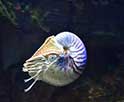Siberian Mummified Saber-Toothed Tiger Discovered
Amazing Discovery: Mummified Saber-Toothed Tiger in Siberian Permafrost
Reading time : 1 minute,
Discovery Chepe Id-673-ECO
Published in
04-17-2025

In a breathtaking paleontological discovery, scientists in Russia have unearthed a remarkably well-preserved saber-toothed tiger cub, believed to be around 28,000 years old. Found in the frozen soil of Yakutia, Siberia, the cub ? nicknamed Sparta ? represents one of the most complete and intact specimens ever found of the extinct genus Homotherium.
The Discovery:
Sparta was discovered in 2020 by local mammoth tusk hunters in the Badyarikhskoe region of Yakutia. Just meters away, a second cub, named Boris, was also found, though it's believed he lived roughly 43,000 years ago. Both cubs were entombed in the permafrost, a natural deep-freeze that preserved them in exceptional condition.
Preservation Status:
According to researchers from the Russian Academy of Sciences, Sparta's body is so well preserved that its fur, skin, internal organs, and even whiskers are intact. Scientists were able to determine that the cubs were just a few weeks old when they died, possibly due to a landslide or sudden collapse in their den.

Ice Age Marvel: Mummified Homotherium Found in Siberia
Species Identification:
Although often referred to as saber-toothed tigers, Sparta and Boris are not directly related to modern tigers. They belong to the genus Homotherium latidens, commonly known as scimitar-toothed cats. These prehistoric predators roamed parts of Europe, Asia, and North America and are known for their slightly shorter but wider canines compared to the famous Smilodon.
Scientific Importance:
This find is not just a visual marvel ? it provides rare DNA material that could help researchers understand more about feline evolution, Ice Age ecosystems, and even the potential for de-extinction studies.
Image Credits:
Close-up of Sparta's head: Photo by Alexey V. Lopatin via National Geographic
Side view of cub skulls aged 3 weeks: Lopatin et al., 2024, via Muy Interesante
Full-body mummy in permafrost: Via Reuters, published in El Litoral
Mummy and digital reconstruction: Russian Academy of Sciences via HuffPost
Lab photo of the cub: Published by CNN en Español

Future Potential:
Researchers continue to analyze the remains using modern imaging and genomic tools. While some have speculated about the potential of cloning or gene-editing revival, scientists are mostly focused on understanding how these big cats adapted to cold climates and coexisted with early humans.
This discovery is a reminder of how much the frozen world beneath our feet still has to tell us about Earth?s distant past.
See Also
Discovery Chepe
Most read...















